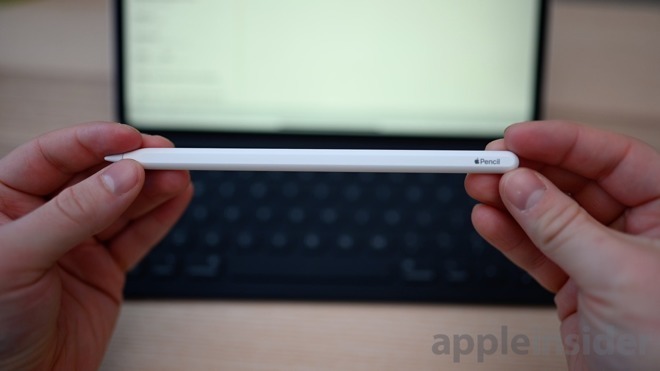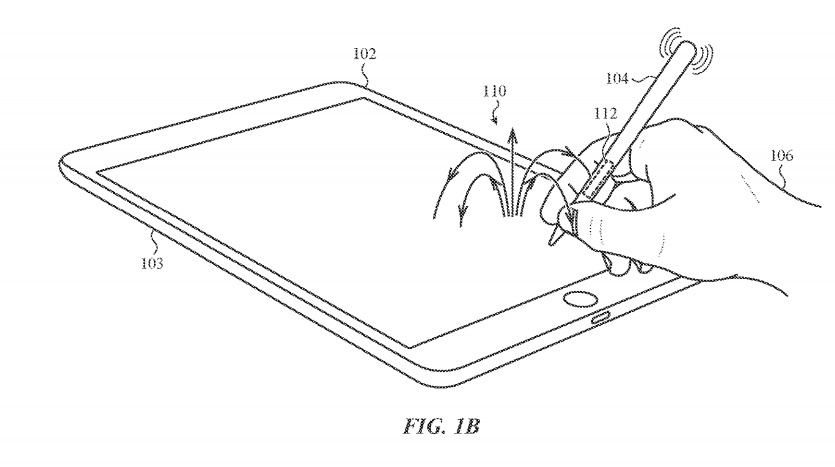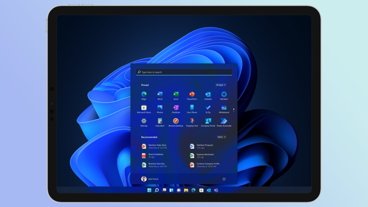The Apple Pencil could provide its users with form of haptic feedback in a future version, with the use of magnetic fields physically affecting the stylus while it is actively being used to draw on an iPad or iPad Pro, using the force to vibrate the implement.
As peripherals and accessories go, it is quite difficult to add haptic feedback in any form to a stylus like an Apple Pencil. Where other input systems offer some level of physical feedback, such as a vibration or the feeling of actuation when using a key, the stylus is usually kept free from such additions, but remains open to the possibility of adding it in the future.
The most obvious idea is to add a motor or actuator of some form that can vibrate the stylus, borrowing a technique used in game controllers, but such a system would require considerable battery power to be implemented properly.
In a patent granted by the US Patent and Trademark Office on Tuesday titled "Stylus with external magnetic influence," Apple suggests such an idea can be performed, by creating magnetic fields that can impart a force on the tool.
In Apple's proposal, the stylus includes a magnetic component embedded inside that functions just as a normal Apple Pencil usually does. The addition of a magnet, or a part that could be influenced by magnetic fields, is a key addition that allows the entire system to function, as fields generated move the stylus magnet, which in turn moves the attached stylus.
The magnetic component could be housed in a spring, which would allow the magnet to be influenced and indirectly affect the stylus. For instances such as drawing, where full control over a stylus' position is needed, this would allow for haptic feedback without majorly affecting the nib's movement.
To create said fields, Apple suggests the use of a cover that includes a conductive coil, as well as a magnetic shunt positioned under the conductive coil to alter its properties. Circuitry could be used to energize the coil to create the magnetic field, which affects the stylus.
For a more refined system, there could be the use of multiple conductive coils in an overlapping arrangement. By activating different coils, and the device knowing where the stylus is via normal means, the system could pull or push the stylus in different directions. An alternating magnetic field could provide a vibration effect.
There is also the possibility of the system being a temporary addition to an iPad, rather than being a permanent feature. A housing dock could be used to impart the magnetic force, rather than the device itself.
Apple files numerous patent filings on a weekly basis, but while the existence of a patent may not be a guarantee that the concept will appear in a future product or service, it does show areas of interest for Apple's research and development efforts.
One October 2018 patent application pair suggested the use of ultrasonic touch detection, both for the position of a stylus' touch on a surface, as well as on the surface of the Apple Pencil itself, such as detecting finger taps or how a user grips the stylus. Another application from February of the same year suggested how a stylus and motion or orientation sensors could allow for a stylus to work with any flat surface or in the air, with movements translated into inputs for applications.
 Malcolm Owen
Malcolm Owen









 Marko Zivkovic
Marko Zivkovic
 Christine McKee
Christine McKee
 Andrew Orr
Andrew Orr
 Andrew O'Hara
Andrew O'Hara
 William Gallagher
William Gallagher

 Mike Wuerthele
Mike Wuerthele
 Bon Adamson
Bon Adamson




-m.jpg)



1 Comment
While workable, it seems too complex and expensive.